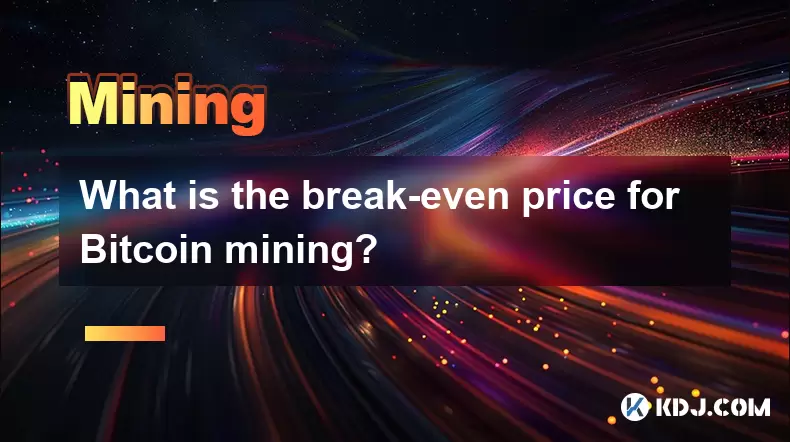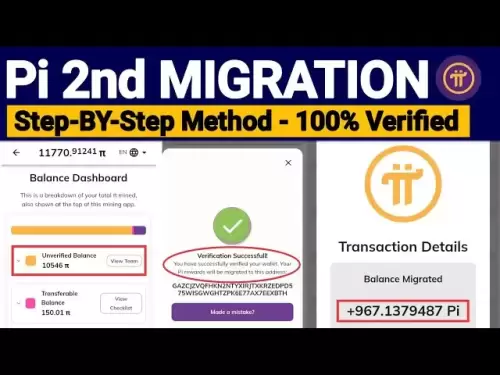-
 Bitcoin
Bitcoin $117,991.5647
-0.03% -
 Ethereum
Ethereum $2,966.4808
0.18% -
 XRP
XRP $2.8076
0.64% -
 Tether USDt
Tether USDt $1.0003
0.00% -
 BNB
BNB $689.9050
-0.63% -
 Solana
Solana $162.0407
-0.80% -
 USDC
USDC $0.9999
0.00% -
 Dogecoin
Dogecoin $0.1995
-1.51% -
 TRON
TRON $0.3001
-1.21% -
 Cardano
Cardano $0.7426
3.25% -
 Hyperliquid
Hyperliquid $47.7978
2.84% -
 Stellar
Stellar $0.4411
16.52% -
 Sui
Sui $3.4267
0.15% -
 Chainlink
Chainlink $15.3148
0.07% -
 Bitcoin Cash
Bitcoin Cash $506.5880
-1.91% -
 Hedera
Hedera $0.2222
12.41% -
 Avalanche
Avalanche $21.2049
1.67% -
 UNUS SED LEO
UNUS SED LEO $9.0606
-0.19% -
 Shiba Inu
Shiba Inu $0.0...01325
-0.86% -
 Toncoin
Toncoin $2.9979
0.32% -
 Litecoin
Litecoin $94.3717
1.13% -
 Polkadot
Polkadot $3.9873
-0.29% -
 Monero
Monero $336.1497
0.92% -
 Dai
Dai $0.9999
-0.01% -
 Uniswap
Uniswap $8.5189
-0.60% -
 Ethena USDe
Ethena USDe $1.0005
-0.04% -
 Pepe
Pepe $0.0...01236
-0.92% -
 Bitget Token
Bitget Token $4.4002
-0.23% -
 Aave
Aave $303.5433
1.05% -
 Bittensor
Bittensor $391.1314
-0.35%
What is the break-even price for Bitcoin mining?
The break-even price in Bitcoin mining is the minimum value at which miners can operate without profit or loss, influenced by factors like energy costs, hardware efficiency, and regional electricity rates.
Jul 13, 2025 at 02:07 pm

Understanding the Concept of Break-Even Price in Bitcoin Mining
The break-even price for Bitcoin mining refers to the minimum market value of Bitcoin at which a miner can operate without making a profit or a loss. This figure is crucial for miners who want to assess whether their operations are financially sustainable. The calculation involves factoring in all operational expenses such as electricity costs, hardware depreciation, cooling systems, labor, and maintenance fees.
Each miner's break-even point varies depending on several variables including geographical location, access to low-cost energy, efficiency of mining equipment, and network difficulty levels. For instance, miners located in regions with cheap electricity tend to have a lower break-even price compared to those in high-energy cost areas.
Key Components Influencing the Break-Even Price
Several factors directly impact the break-even price for Bitcoin mining:
- Electricity Costs: Energy consumption is the most significant expense in mining. Locations with subsidized or renewable energy sources like hydroelectric or geothermal power offer cheaper rates, significantly lowering the break-even threshold.
- Mining Hardware Efficiency: Modern ASIC (Application-Specific Integrated Circuit) miners, such as the Bitmain Antminer S19 series or MicroBT WhatsMiner M30S, consume less power while delivering higher hash rates. Older models may result in higher per-block mining costs.
- Network Difficulty: As more miners join the network, the difficulty of mining new blocks increases, requiring more computational power to mine each block. Higher difficulty translates into higher break-even prices unless countered by improved efficiency or reduced costs.
- Cooling and Infrastructure: Mining generates substantial heat, necessitating cooling solutions. Whether using air conditioning, immersion cooling, or natural ventilation affects overheads.
- Maintenance and Labor: Regular upkeep of mining rigs and facilities adds to ongoing expenses, especially in large-scale mining farms.
How to Calculate the Break-Even Price for Bitcoin Mining
To determine your personal break-even price, you need to analyze both fixed and variable costs involved in mining:
- Step 1: Determine Power Consumption: Identify how many watts per hour your mining rig uses. For example, an Antminer S19 Pro consumes approximately 3250W/hour.
- Step 2: Multiply by Electricity Rate: If your electricity rate is $0.06 per kWh, multiply this by the daily wattage consumed. For instance, 3250W x 24 hours = 78kWh/day; 78kWh x $0.06 = $4.68/day in electricity costs.
- Step 3: Calculate Daily Earnings: Use a mining calculator to estimate how much Bitcoin you earn per day based on current difficulty and hashrate.
- Step 4: Convert Bitcoin Earnings to Fiat: Multiply the amount of BTC earned by the current market price. If you earn 0.0005 BTC/day and the price is $30,000, that equals $15/day.
- Step 5: Subtract Expenses: Deduct total daily expenses (electricity, maintenance, etc.) from daily earnings. If expenses are $5 and earnings are $15, your net gain is $10/day.
- Step 6: Find the Break-Even Point: Divide total daily expenses by the BTC mined per day. If you spend $5/day and mine 0.0005 BTC/day, your break-even price would be $5 / 0.0005 = $10,000/BTC.
This means if Bitcoin trades below $10,000, you'd lose money operating under these conditions.
Regional Differences in Break-Even Prices
Geographical location plays a pivotal role in determining the break-even price for Bitcoin mining. Countries with abundant and inexpensive energy resources offer a competitive edge:
- Kazakhstan: Following China’s crackdown on mining, Kazakhstan became a hub due to relatively low electricity costs (~$0.04–$0.06/kWh). Miners there often enjoy break-even prices below $15,000.
- Canada: Regions with cold climates and hydroelectric power allow efficient cooling and affordable electricity (~$0.05–$0.08/kWh), contributing to moderate break-even thresholds.
- Norway: With access to nearly free hydropower during off-peak times, some miners achieve break-even points below $10,000.
- United States: In states like Texas with deregulated energy markets and abundant wind/solar power, electricity can drop below $0.03/kWh, allowing for very low break-even prices.
In contrast, miners in countries with high energy tariffs or limited infrastructure face break-even prices exceeding $25,000, making profitability challenging during bear markets.
Impact of Market Conditions on Break-Even Prices
Market dynamics also influence the break-even price indirectly. During bull runs when Bitcoin’s price surges, even inefficient miners can turn a profit temporarily. However, rising prices attract more participants, increasing network difficulty and pushing up break-even prices over time.
Conversely, during prolonged bear markets, only miners with the lowest break-even costs remain profitable. Many smaller operators shut down rigs when Bitcoin falls below their individual break-even level, leading to temporary reductions in network hash rate until conditions improve.
Another factor is block reward halving, which occurs roughly every four years. After each halving, miners receive fewer Bitcoins per block, effectively doubling the break-even price unless offset by increased efficiency or decreased costs.
Frequently Asked Questions
Q1: Can I lower my break-even price after purchasing mining equipment?
Yes, by relocating to a region with cheaper electricity, optimizing cooling systems, or upgrading ancillary components like power supplies, you can reduce ongoing costs post-purchase.
Q2: Is it possible to mine Bitcoin profitably with a break-even price above the current market price?
No, mining becomes unprofitable when the market price is below your break-even point. It's generally advisable to pause operations until either the price rises or costs decrease.
Q3: How do transaction fees affect the break-even price?
Transaction fees add to block rewards, slightly reducing the effective break-even price. However, they are typically minor compared to the block subsidy and fluctuate based on network congestion.
Q4: What happens if Bitcoin’s price remains below my break-even point for months?
Prolonged periods below break-even can force miners to sell equipment, renegotiate contracts, or seek alternative revenue streams such as hosting third-party mining operations.
Disclaimer:info@kdj.com
The information provided is not trading advice. kdj.com does not assume any responsibility for any investments made based on the information provided in this article. Cryptocurrencies are highly volatile and it is highly recommended that you invest with caution after thorough research!
If you believe that the content used on this website infringes your copyright, please contact us immediately (info@kdj.com) and we will delete it promptly.
- Little Pepe, Pepe Coin, and Bonk: Meme Coin Mania Sweeping Crypto in 2025!
- 2025-07-13 22:36:38
- ADA, NEAR, BlockDAG: Crypto Trends and Insights You Can't Miss (NYC Style)
- 2025-07-13 22:36:38
- TRUMP Tokens Unlocked: A Deep Dive into World Liberty Financial and Aqua 1's $100M Investment
- 2025-07-13 22:50:37
- Cryptos Under $0.10: Solana's Successors and the Top 10 Potential
- 2025-07-13 22:50:37
- Crypto, Gold, and Bitcoin: A New York Minute on the Digital Gold Rush
- 2025-07-13 20:30:16
- Crypto iGaming in India: JetTon, LunarBet, and the Evolving Landscape
- 2025-07-13 20:50:16
Related knowledge

How to keep a mining rig cool
Jul 12,2025 at 01:42pm
Understanding the Importance of Cooling in Mining RigsCryptocurrency mining is an intensive process that places heavy demand on hardware components, p...

How much does it cost to start crypto mining?
Jul 13,2025 at 12:22am
Understanding the Basic Costs of Crypto MiningStarting crypto mining involves several upfront and ongoing expenses. The primary costs include hardware...

What is the most profitable crypto to mine?
Jul 13,2025 at 07:00am
Understanding Mining Profitability in CryptocurrencyWhen evaluating the most profitable crypto to mine, it's essential to consider several factors tha...

What do I need to start mining crypto?
Jul 13,2025 at 12:28am
Understanding the Basics of Crypto MiningCrypto mining is the process by which transactions are verified and added to a blockchain, and new coins are ...

How does crypto mining work?
Jul 13,2025 at 11:01am
Understanding the Basics of Crypto MiningCrypto mining is the process through which new cryptocurrency coins are introduced into circulation and trans...

How to find the best Dogecoin mining pool for me
Jul 12,2025 at 04:14pm
Understanding the Role of a Mining PoolWhen mining Dogecoin, joining a mining pool can significantly increase your chances of earning consistent rewar...

How to keep a mining rig cool
Jul 12,2025 at 01:42pm
Understanding the Importance of Cooling in Mining RigsCryptocurrency mining is an intensive process that places heavy demand on hardware components, p...

How much does it cost to start crypto mining?
Jul 13,2025 at 12:22am
Understanding the Basic Costs of Crypto MiningStarting crypto mining involves several upfront and ongoing expenses. The primary costs include hardware...

What is the most profitable crypto to mine?
Jul 13,2025 at 07:00am
Understanding Mining Profitability in CryptocurrencyWhen evaluating the most profitable crypto to mine, it's essential to consider several factors tha...

What do I need to start mining crypto?
Jul 13,2025 at 12:28am
Understanding the Basics of Crypto MiningCrypto mining is the process by which transactions are verified and added to a blockchain, and new coins are ...

How does crypto mining work?
Jul 13,2025 at 11:01am
Understanding the Basics of Crypto MiningCrypto mining is the process through which new cryptocurrency coins are introduced into circulation and trans...

How to find the best Dogecoin mining pool for me
Jul 12,2025 at 04:14pm
Understanding the Role of a Mining PoolWhen mining Dogecoin, joining a mining pool can significantly increase your chances of earning consistent rewar...
See all articles

























































































